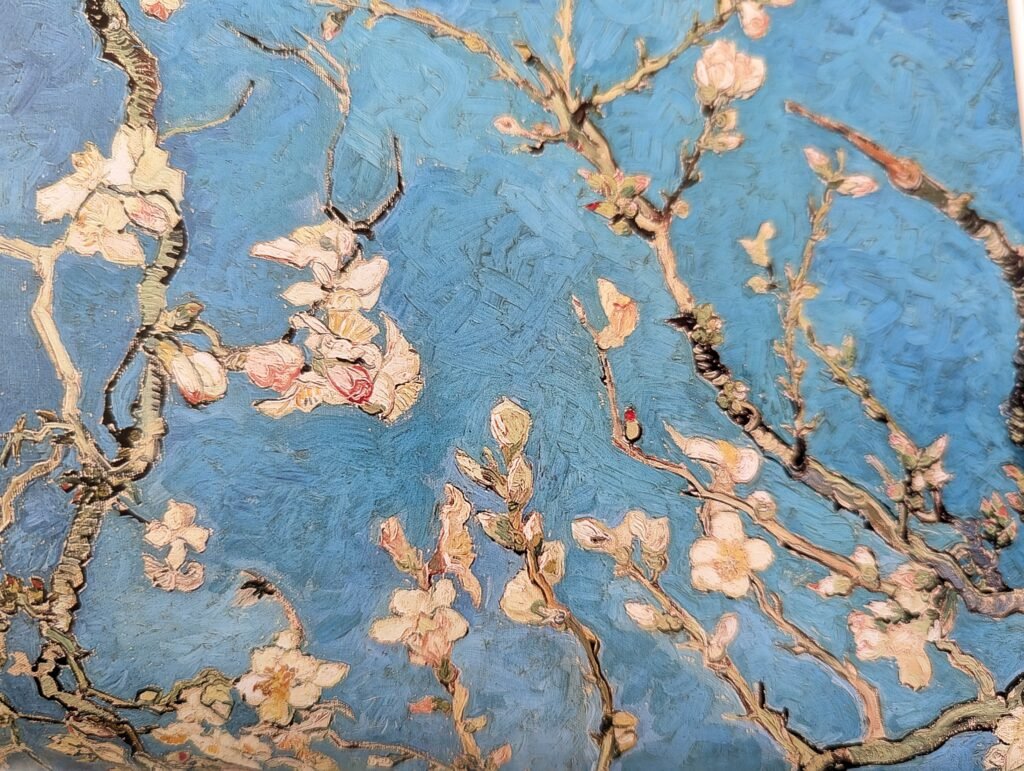Spring flowers are always a joy to see. In England, we’ve had a remarkably wet winter and it felt at times like it would never end! Seeing my garden come to life has certainly brought a smile to my face, and the brushes are at the ready!
I don’t consider myself to be an expert gardener but I do take pleasure in bringing on seeds then photographing them as the grow. I also have a fascination with the skeletal remains of plants once they die off, but right now the focus is the unfurling leaves and pretty colours which have been unleashed by a few sunny days.
My post today is here simply to share a little light with you. To marvel at nature and to perhaps to provide you some art inspiration. Who knows, I might even inspire you to pop off to the garden centre to start your own quest to botanical art!
Spring Flowers in the Garden in May
The Bluebells are fading now, as are the Lily of the Valley and Forget-Me-Nots, but in their place I have Wallflowers, Peonies and Canadian Poppies.
Each of these have their moment of glory, and for some it’s short lived. That’s why I take so many photos, and it’s also why I’ve decided to share my floral calendar with you.
I do love to paint landscapes, but frequently my heart slips back to flowers. Whether using watercolour paints, or demonstrating how to use watercolour pencils, floral art is perhaps more of a passion.
The Power of Flowers
Bear with me here. When I think about flowers I see a bigger picture. Apple blossom is the foundation of a healthy food, Courgette flowers are edible, and the Nastursium seedlings outside my window will soon be salad!
I also use skin products that are full of essential oils, so for me the love of flowers goes far beyond the visual. I suppose with this in mind it makes sense that I’m planning to develop Switch Off Tune In, my arts for wellness project.
There is no doubt that nature has plenty to offer when it comes to our health, as does art; the two have been intertwined throughout history. Whether it’s through plants being used in cave paintings, or Van Gogh soothing his insanity by painting flowers and landscapes, the connection is strong.
Embracing all that nature offers, and using it benefit our wellbeing seems simple.
How to Paint Spring Flowers in Watercolour
Like any art, your floral painting style should be exactly that… uniquely yours. A good example of pushing your own painting boundaries is to take a look at Van Gogh’s Sunflower paintings (yes, there are many). He had no intention of painting perfection, instead striving to capture what he saw and felt. On a side note, if you’re interested in this topic I can recommend this book about Van Gogh. I own it, and enjoy reading it regularly, so it’s a genuine recommendation.

On page 66 you’ll see one of the lesser known Sunflower paintings ‘Two Cut Sunflowers’, but in line with the theme of Spring flowers, there’s also a beautiful Almond Blossom painting on page 126 (shown). I love this painting so much that I might actually write a separate post about it!
But back to how to paint flowers.
The Key to Painting is to Observe
Even if you want to learn how to paint loose watercolour flowers, you still need to understand shapes and contrasts. This phrase will help you remember that, and will help you train your artistic eye. It will also help your paintings immensely.
‘lightest lights against darkest darks’
I will delve into this further with a specific example, and will add that link here once the video is ready.
Initially, you might find it frustrating if you can’t get the results you want; keep your first paintings and continue to paint. You’ll be amazed how much your art has improved when you do a ‘then and now’ comparison.
Accept that you need to enjoy the process, then start with my tips to inspire your painting ideas.
First Steps of Learning How to Paint Flowers
- Sit for a few minutes, focus, and study the flower
- Identify shapes and contrasts
- Invest in a sketchbook
- Get some fine-liner pens (this will help you eliminate perfectionism)!
- Start nature journalling & sketching
- Experiment
- Build your own reference library with many close-up photos
- Don’t give up!
It’s worth noting that the very act of being present and devoting your attention to nature is good for you, too.
I will soon add a video about this here which will go into techniques along with a PDF with examples. I do believe that the advice above though is something you can start immediately. Taking photos and getting into the habit of sketching is fundamental to your art!
Spring Flowers Art
Today, I will be starting on the examples I’ve referred to above. It’s likely I’ll do some pen and ink sketches, take hundreds of photos, and will splash some watercolour around. Unfortunately, my day job also has to be squeezed in so please be patient with me.
Once I’m ready, I’ll add the resources to this page. In the meantime, if you’d like to be notified when I release any videos or new blog posts, sign up for my newsletter Switch Off Tune In.
Art can take time, but being spontaneous is where the inspiration comes alive. After all, the birth of Impressionism was about capturing the moment, yet often painters like Van Gogh and Monet became obsessed with the study of one subject.
I’ll leave it for now, but I’ll soon be back with a bundle of useful references to help you learn how to paint gorgeous Spring flowers.
